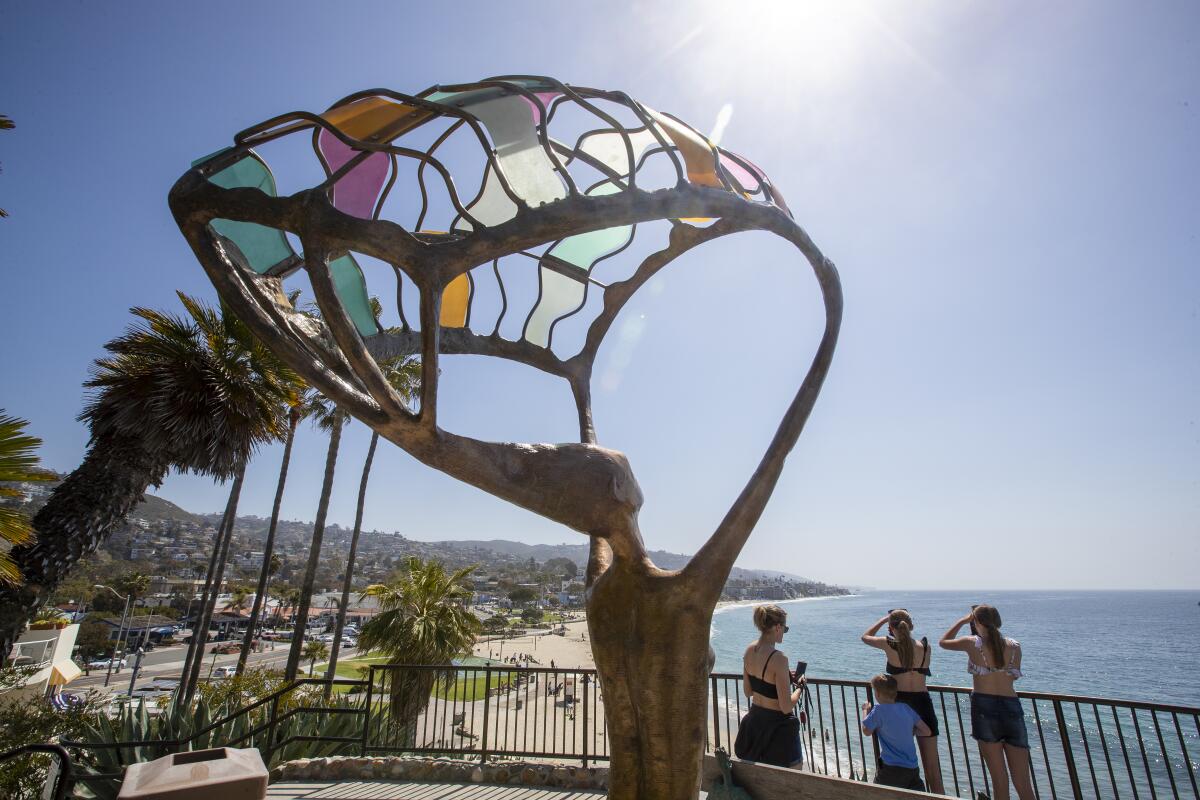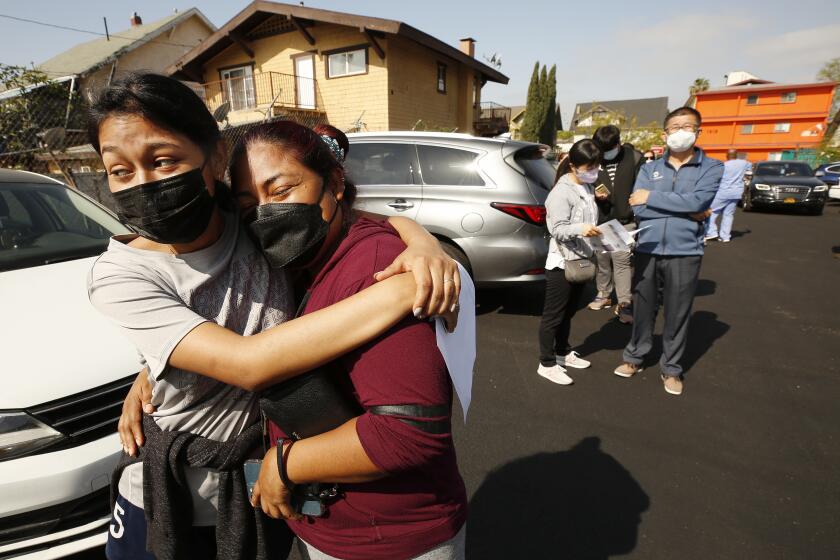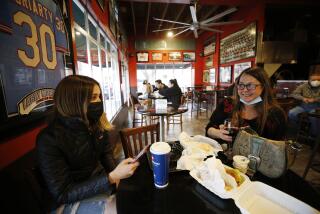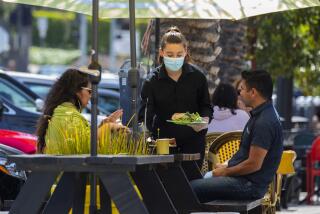Orange County could leap into yellow tier, with widest reopenings, as soon as next week

- Share via
In another milestone for reopening the Southern California economy, Orange County is now within striking distance of its widest reopening based on the state’s four-tiered, color-coded blueprint.
According to data released Tuesday, Orange County’s rate of new coronavirus cases — adjusted based on the number of tests performed — dropped to 1.8 per day per 100,000, meaning it could move into the yellow tier, the most lenient category, as soon as next week, if trends hold.
Counties making moves on the reopening road map Tuesday included Mono and San Mateo, which moved from orange to yellow, and Madera, which moved from red to orange. The changes bring nine of the state’s 58 counties into the yellow tier. No counties moved backward.
Besides Orange County, Santa Clara, Santa Cruz, Tuolumne and Amador counties are poised to enter the yellow tier next week if their coronavirus numbers remain constant or continue to decline.
Orange County has been in the orange tier since March 29, when it and Los Angeles County advanced at the same time. Los Angeles fully entered the yellow tier last week, allowing for the broadest reopening of the economy since the pandemic began more than a year ago. It is the first county in Southern California to reach the yellow tier since the reopening criteria were established last summer.
Public health experts are optimistic that coronavirus case rates and vaccinations are trending in the right directions.
Besides L.A. County, the other counties in the yellow tier are San Francisco, San Mateo, Mendocino, Lassen, Mono, Trinity, Sierra and Alpine. Those nine counties account for around 12 million Californians, or about 30% of the state’s population.
Other Southern California counties are at least two weeks away from entering the yellow tier. Counties must have an adjusted daily rate of less than 2 new coronavirus cases per 100,000 residents two weeks in a row to qualify for the yellow tier.
Ventura County has a rate of 2.3; San Bernardino County, 2.5; and Riverside County, 2.7. Farther away from the case-rate threshold are Santa Barbara County, with a rate of 3.5; San Diego County, with 3.7; and Imperial County, at 5.2.
By contrast, L.A. County’s rate is 1.4 and Orange County’s is 1.8.
In general, reaching the yellow level allows expanded capacity at restaurants, gyms, movie theaters, amusement parks, sports venues and museums. One of the biggest changes involves bars, which in the orange tier were only allowed to serve patrons outdoors unless they served food.
In the yellow tier, bars that don’t serve food can reopen indoors, with a maximum capacity of 25% or 100 people, whichever is fewer. The limit can increase to 37.5% if all guests show proof of full vaccination or a negative test.
Saunas and steam rooms can reopen, with up to 50% capacity while following physical distancing guidelines.
Gyms and fitness centers can expand indoor capacity to 50%, up from 25%.
Water parks can expand to 40% capacity outdoors, up from 25%; indoor water parks, pools and rides can expand to of 25% capacity, up from 15%.
Amusement parks and fairs can expand attendance to 35% of capacity, up from 25% in the orange tier. Visitors must either be California residents or fully vaccinated.
Restaurants are no longer capped at 200 guests at a time, as required in the orange tier, but still must operate at no more than 50% capacity indoors.
Movie theaters can expand to up to 50% capacity, up from the previous cap of 25% or 100 people, whichever was fewer.
Indoor seated live events and performances in large-capacity venues — with seating for more than 1,500 guests — can reach 10% of capacity or 2,000 guests, whichever is less, but if everyone has a negative test or has proof of full vaccination, the limit can increase to 50%, up from 35% in the orange tier.
Outdoor seated live events, which includes baseball games, can expand to 67% of capacity in the yellow tier, up from 33% in the orange tier. Guests must live in California or be fully vaccinated.
Indoor family entertainment centers, including arcades, ice-skating rinks, playgrounds, bowling alleys, escape rooms, bounce centers, ball pits and laser tag arenas, can expand to 50% of capacity, up from 25%.
Wineries, breweries and distilleries can expand to 50% of capacity or 200 people indoors, whichever is less; in the orange tier, the limit is 25% or 100 people, whichever is less.
Card rooms and satellite wagering sites can open indoors up to 50% capacity, up from 25%.
Conferences, receptions and meetings in the yellow tier can expand capacity to accommodate up to 200 people outdoors, or up to 400 people outdoors if everyone tests negative or shows proof of full vaccination. Indoor events can be held only if all guests are tested or show proof of full vaccination, and in the yellow tier are limited to a maximum of 200 people. These events need to have assigned seating and no intermingling of private events.
The color-coded-tier framework that regulates the economy’s reopening is expected to be moot next month. California is aiming to scrap the framework and fully reopen its economy on June 15, as long as vaccine supply is stable and hospitalization numbers stay low, though some safety rules will remain in place, such as requiring testing or vaccination verification for large-scale indoor events, such as conventions.
More to Read
Sign up for Essential California
The most important California stories and recommendations in your inbox every morning.
You may occasionally receive promotional content from the Los Angeles Times.













